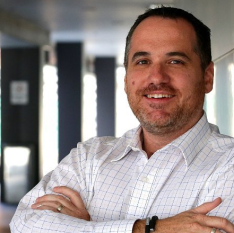Podcasts: monetising a misunderstood media beyond direct response advertising
 In this guest post Trevor Long says investing in podcasting shouldn’t intimidate brands – just think ‘radio’ with download metrics when allocating ad spend.
In this guest post Trevor Long says investing in podcasting shouldn’t intimidate brands – just think ‘radio’ with download metrics when allocating ad spend.
I’ve been producing podcasts for six-and-a-half years, and having published over 580 episodes I like to think I’ve got a bit of knowledge and experience when it comes to creating, publishing and monetising the medium.
Strangely, despite a huge growth in the conversation in media and marketing circles about podcasts there is still a fundamental lack of understanding out there.
This column was prompted by a tweet from comedian and digital content writer Dan Ilic. “Podcasting’s Advertising problem…. no one knows true metrics.”


I don’t really watch commercial tv. I have ad blockers installed. Apart from outdoor some of the few ads I encounter are via podcasts. Mail Chimp on Serial, The Nissan Navara on old podcasts of Get This! I know someone who did an offer for a local store on a podcasts and got a significant number of sales off the back of it in the week the podcast was released. However it continued on intermittently for months afterwards. It cost almost nothing. So if you do dedicated offers based around codes or mentioning the podcast you can easily track actual dollars.
Great post. I think podcasting is going to continue to grow. I would be curious to know if you had any insight in actually building an audience. I seem to talk to myself mostly…I am just 16 weeks in, but I do zero advertising for it, just put it on my website which also has minimal traffic…its a tough long game I guess.
Nice one Rob. You’re right about downloads, the state of measurement and the need to constantly focus on educating clients and advertisers. As an agency, we’re helping clients produce, distribute and measure podcasts and I’ve had many of the same conversations. The one thing I’d add is the importance of measuring audience subscriptions. Obviously iTunes doesn’t give you podcast subscriber numbers, but an email newsletter is a great substitute, particularly in B2B. It’s a great way of wrapping extra context around the download stats because you can track URLs embedded in an email back to a podcast landing page or blog that hosts download & streaming options. From there you can measure leads, demo signups etc. Download numbers and email subscription totals won’t match up perfectly, but you can track their grown in parallel to get a bigger picture of what’s going on.
Thanks Trevor for your perspective. We have strong demand for 2GB’s podcasted content and we average between 3 million to 4 million podcast downloads per month. I think podcasting is very much ahead of the curve, but suggest that in time it will be viewed as legitimate marketing channel, particularly when we can establish strong linkages with both legacy media (e.g. radio) and new media (e.g. social)
@Daniel – yep, of course when you have a strong audience like a big name radio station there is going to be great demand. I guess the difference is the podcast exclusive content – not the content made available via podcast from on air (ie: interviews from the radio etc) – I think Whooska has the best hope of mass monetisation of all content like that. I think if we reflect on MRN back when Angela Clark was there, it was way way way ahead of it’s time creating a podcast network essentially.
@Mark – sure thing, but it should also be noted that if the server technology is built well enough, you can track subscriptions yourself – just by looking at the load of requests for the XML file – unique users each week etc. That cannot be done through iTunes because iTunes is just one avenue for consumption..
@Ryan – it’s a tough long game, and for an individual starting out you have to be in it for the long haul. That one great show that gets some online attention might not be this week or next, but it will come. Building a social audience, encouraging interaction from the audience is critical. No other Aussie tech podcast has as many comments and ratings on iTunes than mine – I’m proud of that because it’s taken years to build. You’ve just got to push at it.
@Billy – for sure, it is possible to make a correlation between sales and advertising for a direct sell product or service, but I guess I’m talking bigger deal – corporate branding. Why don’t Telstra, Optus, Vodafone advertise in podcasts? Probably because their agencies can’t measure it, can’t therefore include it… But back in the day you advertised on radio for long campaigns for brand awareness and to grow some product knowledge – podcasting has that ability.. The ad agency world has moved to metric driven and programatic buying – yes, that can work in podcasting via pre-rolls, mid-rolls and such (ala what Whooskaa is doing), but for live reads and real brand building – it has to be accepted that it’s just not that kind of medium.
Great post, Trevor.
It strikes me as so odd that so many advertisers still don’t grasp podcasts. It may be because, understandably, a lot of them want big bang for their buck, and when you compare podcast downloads against website UBs, podcast numbers seem so insignificant. But, how often do we just scan over ads online, skim read articles? You’re so right, having someones voice in your ear is so powerful; the intimacy, the engagement, the trust. I can’t wait to see what happens in this space in the next year, I think the big wave is coming, if we can sort the analytics and educate advertisers.